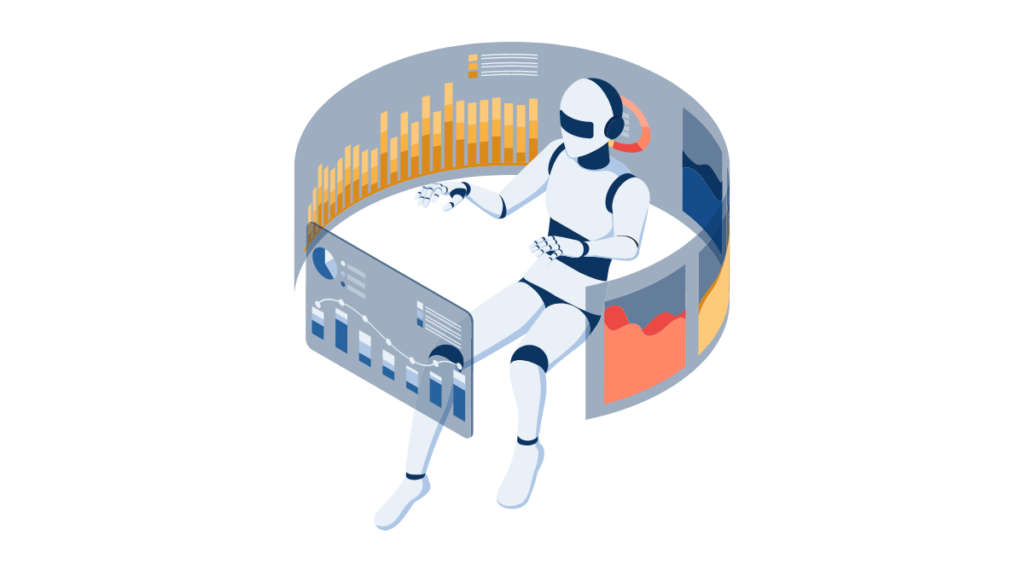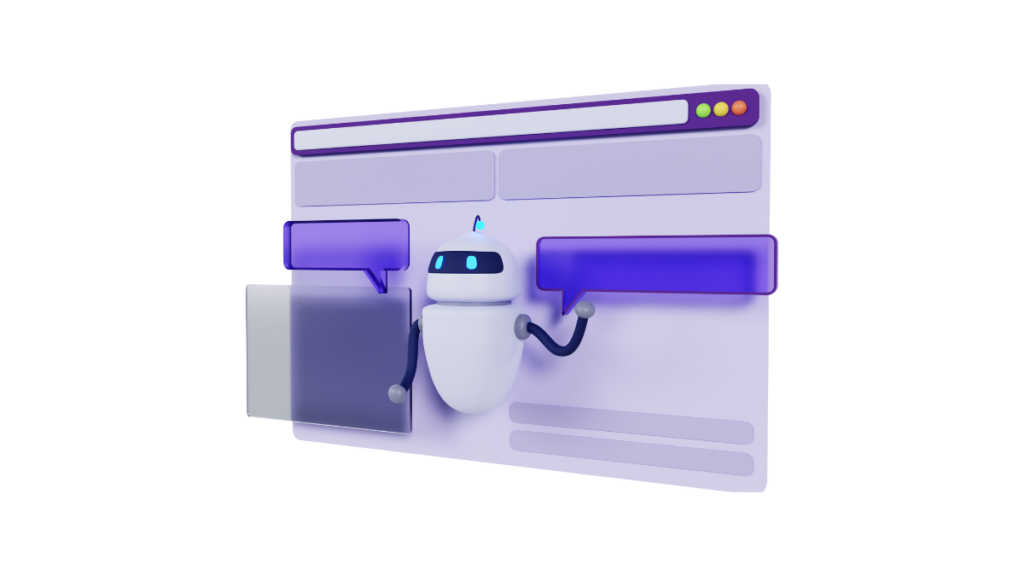As technology advances, we are seeing more and more ways in which artificial intelligence (AI) is being integrated into our daily lives. One such example is ChatGPT, an AI chatbot that has been gaining popularity in recent years. In this article, I will be discussing what ChatGPT is, how it works, the benefits of using it, how to use it effectively, and its limitations and challenges. Additionally, we will dive into some use cases and examples, the future of ChatGPT and AI chatbots, and explore ChatGPT alternatives and resources.
Introduction to ChatGPT

ChatGPT is an AI-powered chatbot that uses natural language processing (NLP) to communicate with humans. It is designed to understand and respond to questions and statements in a conversational manner. ChatGPT was developed by OpenAI, an AI research laboratory, and is based on the GPT-3 (Generative Pre-trained Transformer 3) language model.
What is ChatGPT and How Does It Work?
ChatGPT is an AI chatbot that operates through a conversational interface. It uses machine learning algorithms to analyze and understand text and respond to user queries. The chatbot is pre-trained on a large dataset of text, allowing it to generate responses that are coherent and relevant to the user’s input.
ChatGPT works by breaking down user input into smaller, more manageable parts. It then analyzes each part to determine the user’s intent and generates a response based on that intent. The chatbot is also capable of learning from previous interactions, allowing it to improve its responses over time.
Benefits of Using ChatGPT
There are numerous benefits to using ChatGPT. One of the most significant benefits is its ability to provide instant responses to user queries. This can be especially useful for businesses that receive a high volume of customer inquiries. ChatGPT can help reduce the workload on customer service representatives and improve response times.

Another benefit of using ChatGPT is its ability to personalize responses based on user input. The chatbot can analyze the user’s input and generate responses that are tailored to their specific needs and interests. This can help improve user engagement and satisfaction.
Additionally, ChatGPT can operate 24/7, making it available to users at any time of day or night. This can be especially useful for businesses that operate in different time zones or have customers in different parts of the world.
How to Use ChatGPT Effectively
ChatGPT is a powerful tool that can be used to streamline communication and automate responses. However, to use ChatGPT effectively, it is important to keep in mind a few key principles.

First and foremost, it is important to provide clear and concise input. ChatGPT relies on natural language processing algorithms to understand user input, so it is important to phrase questions and statements in a way that is easy for the chatbot to understand. Avoid using overly complex language, ambiguous phrasing, or sarcasm, as these can lead to inaccurate or irrelevant responses.
In addition, it is important to be patient when using ChatGPT. While the chatbot is designed to generate responses quickly, it may not always provide the desired response on the first try. In these cases, it can be helpful to provide additional information or rephrase the question to help the chatbot better understand the user’s intent. By taking the time to clarify input, users can ensure that they receive the most accurate and helpful responses possible.
Another key principle to keep in mind when using ChatGPT is to monitor the chatbot’s performance and provide feedback. Chatbots are constantly learning and improving based on user input, so it is important to provide feedback on the chatbot’s responses. This can help improve the chatbot’s accuracy and effectiveness over time. If a response is inaccurate or irrelevant, it is helpful to provide feedback on what went wrong and how the response could be improved.
Getting The Most Out Of ChatGPT
There are also a number of best practices that can help users get the most out of ChatGPT. One important practice is to use natural language when interacting with the chatbot. This means using complete sentences, avoiding jargon or technical language, and phrasing questions in a way that is easy for the chatbot to understand.
Another best practice is to use ChatGPT in conjunction with other communication tools. While ChatGPT can be a powerful tool for automating responses, it is not always the best choice for every situation. By using ChatGPT in conjunction with other communication tools such as email or phone calls, users can ensure that they are able to provide the most accurate and helpful responses possible.
Finally, it is important to keep in mind that ChatGPT is not a perfect solution. While it can be a powerful tool for automating responses, it is not always able to provide the most accurate or helpful responses possible. In some cases, it may be necessary to rely on human communication or other tools to provide the most accurate and helpful responses possible.
Overall, using ChatGPT effectively requires a combination of clear and concise input, patience, monitoring and feedback, and best practices. By following these principles and using ChatGPT in conjunction with other communication tools, users can ensure that they are able to provide the most accurate and helpful responses possible, while also streamlining their communication processes and saving time and resources.
ChatGPT Use Cases and Examples
There are many use cases for ChatGPT, ranging from customer service to education. One example is the use of ChatGPT in healthcare. Chatbots can be used to provide patients with information about their health conditions and treatment options. They can also be used to schedule appointments and answer frequently asked questions.

Another use case for ChatGPT is in financial services. Chatbots can be used to provide customers with information about their account balances, transaction history, and investment options. They can also be used to answer questions about financial products and services.
ChatGPT Limitations and Challenges
ChatGPT may also face challenges in terms of privacy and security. As chatbots interact with users, they may collect sensitive information such as personal details or financial information. It is important to ensure that appropriate security measures are in place to protect this information.
Another limitation of ChatGPT is its inability to handle tasks that require physical interaction or manipulation. Chatbots are primarily text-based, which means they cannot perform tasks such as operating machinery or performing medical procedures.
Furthermore, ChatGPT may also face challenges in terms of user trust and acceptance. Some users may feel uncomfortable interacting with chatbots instead of human representatives, and may prefer traditional methods of communication.
Finally, developing and maintaining a high-quality chatbot can be a significant investment of time and resources. Chatbots require ongoing maintenance and updates to ensure that they remain accurate and relevant.
Overall, while ChatGPT has many benefits, it is important to consider its limitations and challenges when deciding whether to implement it in your business or organization.
Some of the main limitations pointed out are:
- Limited ability to understand complex or ambiguous input such as sarcasm, humor, or idiomatic expressions, leading to inaccurate or irrelevant responses.
- The potential for bias in the chatbot’s responses, as they are trained on large datasets of text, which may contain biases or stereotypes.
- The requirement of extensive training and development to ensure accurate and relevant responses, which can be time-consuming and costly.
- Difficulty in maintaining context and continuity in conversations, particularly in long and complex interactions.
- Lack of emotional intelligence, which can make it challenging for chatbots to understand and respond appropriately to human emotions and sentiments.
- Dependence on reliable internet connectivity and technical infrastructure, which can limit accessibility in certain areas or situations.
- Limited ability to handle tasks that require physical presence or interaction, such as providing hands-on support or performing physical tasks.
- Potential for security risks and data privacy concerns, particularly when handling sensitive or personal information.
It’s important to keep these limitations in mind when using ChatGPT and AI chatbots and to consider them when determining the appropriate use cases and applications for these technologies.
Future of ChatGPT and AI Chatbots

The future of ChatGPT and AI chatbots is promising. As technology continues to advance, we can expect to see more sophisticated and intelligent chatbots that are capable of understanding and responding to more complex input. Additionally, we can expect to see more use cases for chatbots in industries such as healthcare, finance, and education.
One of the key areas where AI chatbots are expected to make significant advancements is natural language processing (NLP). NLP is the ability of chatbots to understand and interpret human language in a way that mimics human intelligence. With improvements in NLP, chatbots will become even more conversational and better equipped to handle complex queries and tasks.
Another area of growth for ChatGPT and AI chatbots is in the use of machine learning and deep learning algorithms. These technologies will enable chatbots to learn from past interactions and continuously improve their responses and capabilities. As chatbots become more intelligent and sophisticated, they will be able to handle more complex tasks, leading to greater efficiency and productivity for businesses.
In the future, we can also expect to see more integration of chatbots with other technologies such as voice assistants, augmented reality, and virtual reality. This will open up new possibilities for how chatbots can be used to interact with customers and improve user experiences.
AI In The Industry
The rise of chatbots is driving innovation and investment in the AI industry as a whole. As chatbots become more widely adopted and businesses see the benefits they offer, we can expect to see more investment in AI research and development, leading to even more advancements in this field.
Overall, the future of ChatGPT and AI chatbots is exciting, with the potential to transform the way businesses interact with their customers and automate routine tasks. While there are challenges to overcome, such as ensuring chatbots maintain a human-like conversational tone and maintaining user trust, the benefits of chatbots are clear, and their potential for growth is immense.
ChatGPT Alternatives
While ChatGPT is a popular AI chatbot, there are many alternatives available. Some popular alternatives include Dialogflow, IBM Watson Assistant, and Amazon Lex. Each of these chatbots has its own unique features and capabilities, allowing businesses to choose the chatbot that best meets their needs.
ChatGPT Resources and Tools
There are many resources and tools available for those interested in learning more about ChatGPT and AI chatbots. OpenAI provides a wealth of information on ChatGPT, including tutorials, documentation, and a developer API. Additionally, there are many online communities and forums where developers can share knowledge and collaborate on projects.
Conclusion
In conclusion, ChatGPT is an AI-powered chatbot that uses NLP to communicate with humans. It has many benefits, including its ability to provide instant responses, personalize responses, and operate 24/7. To use ChatGPT effectively, it is important to provide clear input, be patient, and monitor the chatbot’s performance. While ChatGPT has its limitations and challenges, the future of AI chatbots is promising, and we can expect to see more advanced and intelligent chatbots in the future.





